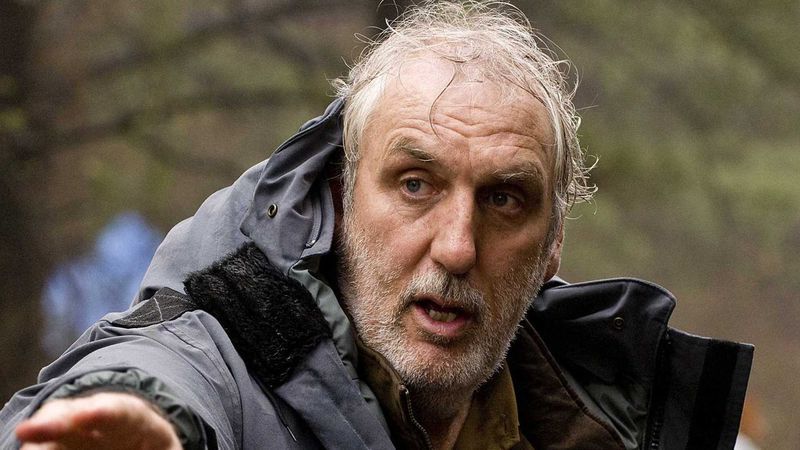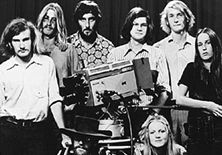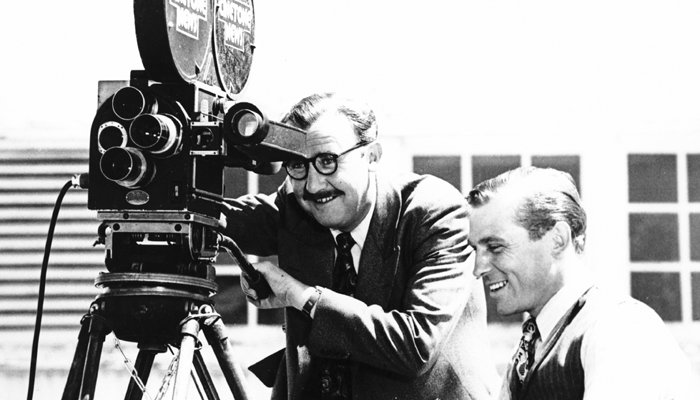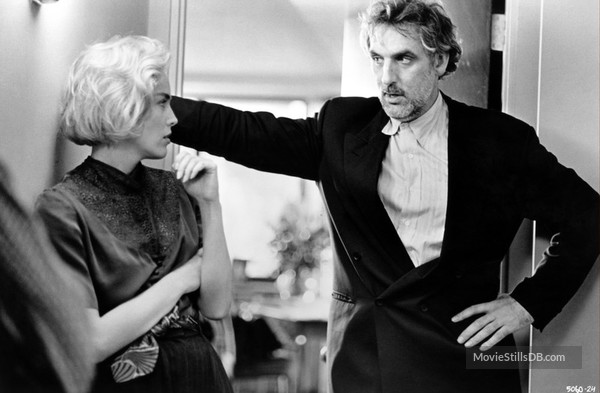IN PROFILE: 2017 AACTA HONOREE PHILLIP NOYCE
 Wednesday, December 6, 2017 at 11:44AM
Wednesday, December 6, 2017 at 11:44AM Hailing from the central New South Wales township of Griffith, Phillip Noyce did not initially present himself as the most likely young filmmaker to take first the Australian industry and then Hollywood by storm. But the towering 6’4” country lad, who made his first film Better to Reign in Hell at age 18, would forge a career that reaches its zenith tonight, when the 67 year-old director is presented with the prestigious Longford Lyell Award at the 7th Australian Academy of Cinema and Television Arts (AACTA) ceremony at The Star Event Centre in Sydney.

SCREEN-SPACE considers the five key moments in Noyce’s brilliant career; contributions that have, as the award recognises, enriched Australia’s screen environment and culture…
1973: A member of the inaugural class of the newly established Film and Television School…
 As a member of the ‘Interim Training Group’, the 22 year-old Noyce joined young hopefuls such as Gillian Armstrong (My Brilliant Career; Starstruck) and Chris Noonan (Babe; Miss Potter) amongst the first wave of students at FTS (later, AFTRS). Under Foundation Director Jerzy Toeplitz and Council chairman Barry Jones, Noyce honed the rough talent he had exhibited in a series of short films shot in Sydney during the 1960s, many of them reflecting the influence of international productions he had screened as head of the legendary Sydney Filmmakers Co-op. His graduating work, the 44 minute documentary Castor and Pollux (below), caught the emergence of a distinctive storyteller with a natural insight into character and nuance. (Pictured, right; Noyce, back-row centre, with FTS Class of '73 students)
As a member of the ‘Interim Training Group’, the 22 year-old Noyce joined young hopefuls such as Gillian Armstrong (My Brilliant Career; Starstruck) and Chris Noonan (Babe; Miss Potter) amongst the first wave of students at FTS (later, AFTRS). Under Foundation Director Jerzy Toeplitz and Council chairman Barry Jones, Noyce honed the rough talent he had exhibited in a series of short films shot in Sydney during the 1960s, many of them reflecting the influence of international productions he had screened as head of the legendary Sydney Filmmakers Co-op. His graduating work, the 44 minute documentary Castor and Pollux (below), caught the emergence of a distinctive storyteller with a natural insight into character and nuance. (Pictured, right; Noyce, back-row centre, with FTS Class of '73 students)
1977-87: The first 10 years…
Upon graduation, Noyce immersed himself in the film production sector, working behind-the-scenes on films such as Ayten Kuyululu’s The Golden Cage (1975) and Oliver Howes’ Let the Balloon Go (1976). It would not  be until 1977 that his feature film directing debut was realeased, the rough and raucous inter-racial outback drama Backroads, starring Bill Hunter and Gary Foley and shot by Russell Boyd. Drawing upon his outback upbringing, Noyce captured a powerful chemistry between his leads that spoke to the volatile political mood of the moment. Noyce’s follow-up was the beloved classic Newsfront (1978), the story of the early days of the Cinetone news camera crews; it would win the director his first Australian Film Institute award for Best Director (one of the film’s eight wins at the 1978 ceremony). Noyce returned to short documentaries and TV work until 1982, when the contemporary thriller Heatwave (1982) paired him with Judy Davis. He returned to the small-screen at the height of the TV mini-series boom and made two of the industry’s finest ever short-form series, The Dismaissal (1983) and The Cowra Breakout (1984).
be until 1977 that his feature film directing debut was realeased, the rough and raucous inter-racial outback drama Backroads, starring Bill Hunter and Gary Foley and shot by Russell Boyd. Drawing upon his outback upbringing, Noyce captured a powerful chemistry between his leads that spoke to the volatile political mood of the moment. Noyce’s follow-up was the beloved classic Newsfront (1978), the story of the early days of the Cinetone news camera crews; it would win the director his first Australian Film Institute award for Best Director (one of the film’s eight wins at the 1978 ceremony). Noyce returned to short documentaries and TV work until 1982, when the contemporary thriller Heatwave (1982) paired him with Judy Davis. He returned to the small-screen at the height of the TV mini-series boom and made two of the industry’s finest ever short-form series, The Dismaissal (1983) and The Cowra Breakout (1984).
1989: Dead Calm.
Noyce had skirted around committing to big budget, commercial cinema until the right project surfaced. That happened in 1989; an adaptation of Charles Williams 1963 novel (once near to filming under Orson Welles) by Mad Max 2 writer Terry Hayes called Dead Calm came to Noyce with on-the-cusp actress Nicole Kidman and established name Sam Neill attached. The collaboration proved electric; the thriller, about a married couple adrift at sea being terrorised by psychopath Billy Zane, proved to be one of the great calling-card films of all time, catapulting all involved onto Hollywood’s hot list. Washington Post critics, calling the film a “majestic horror cruise,” praised Noyce’s direction, calling him, “a masterful manipulator”, stating that he “raises the stakes so skilfully you find yourself ducking the boom.”
1989-2010: Hollywood or bust… Phillip Noyce had earned his shot at Tinseltown-sized success and joined the ranks of Renaissance peers such as Gilliam Armstrong, Peter Weir and Dr George Miller amongst the directing elite of Hollywood. He stumbled slightly with his first film, Blind Fury (1989) with Rutger Hauer (although the ‘sightless samurai’ oddity has found cult favour over time), before hitting big with two instalments in the Tom Clancy/Jack Ryan franchise, Patriot Games (1992) and Clear and Present Danger (1994). Noyce ran gamut in his time at the top of the Hollywood pecking order - one derided dud (Sliver, 1993; pictured, right, with star Sharon Stone), one admired underperformer (The Saint, 1993), one solid standalone hit (The Bone Collector, 1999), one barely-released international production (Catch a Fire, 2006) and one Oscar-friendly prestige pic (The Quiet American, 2002). His last legitimate studio hit was 2010’s Salt, with Angelina Jolie; his last big-budget effort, the YA adaptation The Giver with Jeff Bridges, bombed.
Phillip Noyce had earned his shot at Tinseltown-sized success and joined the ranks of Renaissance peers such as Gilliam Armstrong, Peter Weir and Dr George Miller amongst the directing elite of Hollywood. He stumbled slightly with his first film, Blind Fury (1989) with Rutger Hauer (although the ‘sightless samurai’ oddity has found cult favour over time), before hitting big with two instalments in the Tom Clancy/Jack Ryan franchise, Patriot Games (1992) and Clear and Present Danger (1994). Noyce ran gamut in his time at the top of the Hollywood pecking order - one derided dud (Sliver, 1993; pictured, right, with star Sharon Stone), one admired underperformer (The Saint, 1993), one solid standalone hit (The Bone Collector, 1999), one barely-released international production (Catch a Fire, 2006) and one Oscar-friendly prestige pic (The Quiet American, 2002). His last legitimate studio hit was 2010’s Salt, with Angelina Jolie; his last big-budget effort, the YA adaptation The Giver with Jeff Bridges, bombed.
2002: Rabbit Proof Fence.
At the height of his Los Angeles adventure, Noyce returned to his homeland to direct arguably the crowning achievement in his extraordinary career. Rabbit Proof Fence, based upon the novel by Doris Pilkington Garimara, was the story of three aboriginal girls fleeing a life of indentured servitude and making their way across the dangerous and desolate outback. With controversy raging over ‘The Stolen Generation’, a shameful moment in Australia’s history when indigenous people were taken from their homes as youngsters, to be taught the wihite man’s ways, Noyce directed his most moving and acclaimed film. Phillip Noyce had crafted a film that encapsulated his own outback roots, his country’s terrible heritage and his industry’s global standing.

Reader Comments